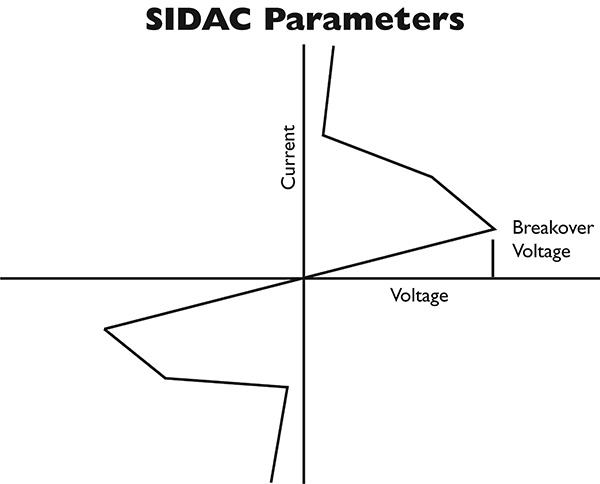With TJ Byers
Triac’s Sidekick: Sidac
Question:
I recently came across the names of two electronic components that are unfamiliar to me: sidac and stabistor. Could you explain them? If you know of any more “weirdo” components, please let me know their names and functions.
John Agugliaro
via Internet
Answer:
You know what a diac is, right? Well, the sidac is the triac equivalent of a diac. Now in English: The sidac is a bidirectional negative resistance device. Let’s place a voltage across a sidac and see what happens.
At low voltages (typically under 70 volts), the sidac behaves like a switch in its off state. As the voltage across the sidac is increased, a point is reached where the switch turns on and conducts current heavily — and will continue to do so until the voltage is removed.

The difference between a diac and a sidac is polarity. A diac is a polarized device that acts like a diode — that is, it has one-way current flow, whereas a sidac can conduct current in both directions. It’s most commonly used to trigger triac gates, strobe xenon flash tubes and HID, ignitors for natural gas, and generators for high-energy pulses for flyback operations. A datasheet with applications (www.littelfuse.com/data/en/data_sheets/e9sidac.pdf) tells a more complete story.
The stabistor is a low voltage zener diode with one to four P-N junctions, where the forward voltage drop across the junctions provides superior dynamic impedance to low voltage zener diodes, which use avalanche electron tunneling. In English: It’s kind of like stacking a bunch of 1N4001 diodes in series to achieve a stable voltage reference in the range of 0.7 to 3.7 volts by forward biasing them. The forward current is critical to the actual voltage, as shown in the Microsemi (www.microsemi.com/document-portal/doc_download/10958-sa7-29-pdf) datasheet.


Comments